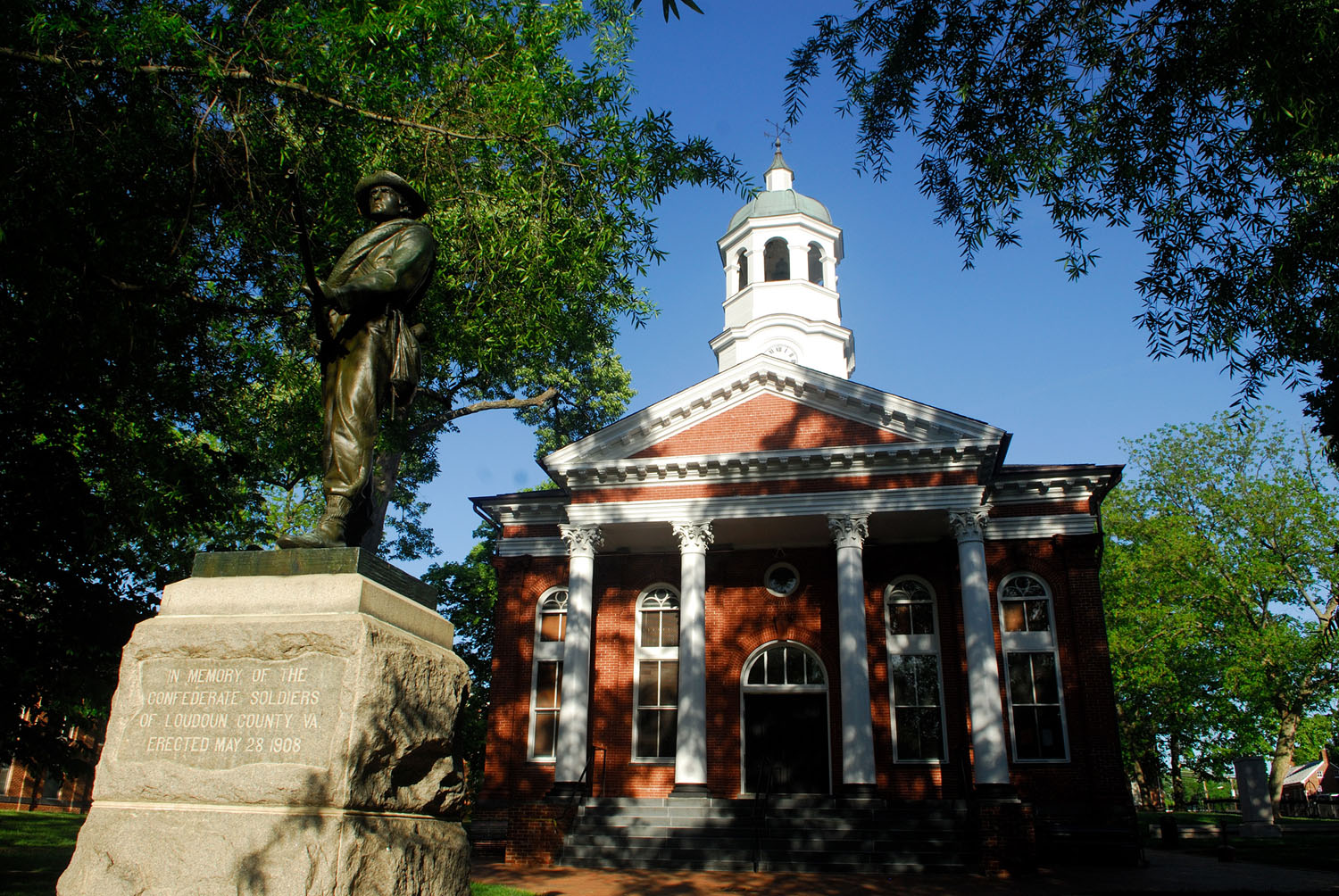First, a little history review: In the rolling northern Virginia piedmont is a settlement, first begun as a small village in about 1750, at what is now the crossroads of King Street and Market Street. Originally known informally as George Town, in honor of the reigning British monarch of the time, it changed to Leesburgh, (then later Leesburg) in honor of the leading colonial-era political figure Thomas Lee, who was for a time a member of the House of Burgesses, and a de facto Governor of Virginia during 1749 and 1750. Thomas’ son Francis Lightfoot Lee lived in Loudoun and brought up the bill in the Virginia Assembly that established the Town of Leesburg in 1758. Robert E. Lee, of Civil War fame, is Thomas’ great grandnephew. Leesburg, Virginia. (n.d.). Retrieved April 9, 2012 from Wikipedia: http://en.wikipedia.org/wiki/Leesburg,_Virginia
 Original 1759 map of Leesburg. James Goode Photograph Collection (VC 0010), Thomas Balch Library, Leesburg, VA
Original 1759 map of Leesburg. James Goode Photograph Collection (VC 0010), Thomas Balch Library, Leesburg, VA
Just 33-miles from Washington, DC at the foot of Catoctin Mountain, Leesburg has enjoyed a rich and varied history. The village’s prosperity changed for the better, in 1758, when the British Colonial Council ordered the establishment of the county Court House at these crossroads. The original courthouse was built in 1761, and has been replaced twice, with the latest built in 1894. Leesburg, Virginia. (n.d.). Retrieved April 9, 2012 from Wikipedia: http://en.wikipedia.org/wiki/Leesburg,_Virginia
 Detail of the Town of Leesburg, Yardley Taylor map of Loudoun County 1853. Map Collection, Thomas Balch Library, Leesburg, VA.
Detail of the Town of Leesburg, Yardley Taylor map of Loudoun County 1853. Map Collection, Thomas Balch Library, Leesburg, VA.
During the War of 1812, Leesburg served as a temporary haven for the US Government and its archives when it was forced to flee Washington, DC in the face of the British Army. In the years of the Civil War, the town changed hands frequently as Confederate and Union armies moved through the area during the Maryland and Gettysburg campaigns. Leesburg, Virginia. (n.d.). Retrieved April 9, 2012 from Wikipedia: http://en.wikipedia.org/wiki/Leesburg,_Virginia
 Leesburg, Virginia. (n.d.). Retrieved April 9, 2012 from Wikipedia: http://en.wikipedia.org/wiki/Leesburg,_Virginia
Leesburg, Virginia. (n.d.). Retrieved April 9, 2012 from Wikipedia: http://en.wikipedia.org/wiki/Leesburg,_Virginia
Leesburg was also home to the WW II General George C. Marshall, Entertainer Arthur Godfrey, Pulitzer-prize winning author Russell Baker, Playboy Playmate (November 1998) Tiffany Taylor, and Football star Joe Theismann. Leesburg, Virginia. (n.d.). Retrieved April 9, 2012 from Wikipedia: http://en.wikipedia.org/wiki/Leesburg,_Virginia
The Loudoun Times-Mirror newspaper was founded in 1798, faithfully providing noteworthy local, national, and international reporting. It was purchased by Arthur Arendel in 1963, and became part of the Times Community Newspapers, owned by Arcom Publishing Inc. Loudoun Times Mirror. (n.d.). Retrieved from http://www.loudountimes.com/index.php/contact/about_us/
Across from the Loudoun County courthouse on East Market, within the Old and Historic District, is a small building that was originally an automobile dealership and repair garage. It is currently the home of the Arcom Publishing company and the Loudoun Times-Mirror newspaper. Recently, Arcom has sought to increase the value of its property for the company, and the town, by pursuing a higher density development at that site. Landmark Commercial Real Estate and DBI Architects, Inc. have been working together with Arcom Publishing since 2007 to realize this goal.
 Detail of 1966 photo, Thomas Balch Library, Leesburg, VA. Current view
Detail of 1966 photo, Thomas Balch Library, Leesburg, VA. Current view
The current design started with a careful review of the existing buildings and streetscapes in the Town. Building on knowledge gained in this survey and analysis, we have studied the Town of Leesburg’s Old and Historic District Design Guidelines.


In addition to the Town’s Design Guidelines, we have followed the recommendations of the Urban Land Institute (ULI) January 2008 Technical Assistance Panel Report, which the Town accepted, commissioned by the Leesburg Downtown Improvement Association to provide expert advice on land use. This report proposes a mid-block building for this site of higher density than that allowed at Market and Loudoun Streets in order to grow economic vitality and Infill Development. Our project is in the historic Downtown neighborhood. It fills a void in the town fabric by completing the edges of the open and incomplete block bounded by Market, Church, and Loudoun Streets, strengthening the colonial street grid while keeping the size and mass smaller than what is allowed by Zoning criteria.
The Courthouse Square project will provide approx 119,000 SF of office and retail space, and 335 parking spaces in a five-story garage – two-levels below grade, and three-levels above grade. The design will provide a building that accomplishes three main objectives:


Fit in to the town character by the use of additive massing and complementary materials; provide a mid-block background building of appropriate density, and; respond to the historic town green and courthouse complex across East Market Street.
With the Approval of the Special Exception for a structured parking garage, the Leesburg Town Council has allowed the project to move forward to the Board of Architectural Review. This board will review the project’s application for a Certificate of Appropriateness, providing guidance on scale, massing, colors, materials, and details. If approved, this will be the last government review prior to building permit to allow construction in the historic district.
Written by Geoffrey Lewis, AIA, Director, DBI Architects, Inc.

